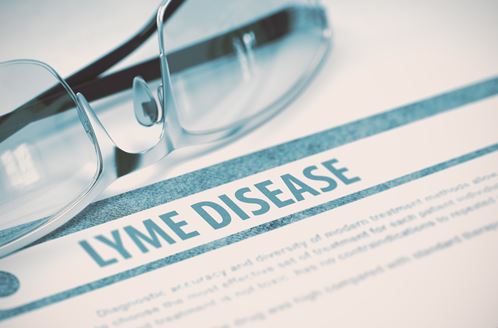
About 30,000 Americans get Lyme disease each year. With milder winters, 90 percent of ticks survived winter, so the tick population continues to grow at an alarming rate.
Ticks spread Lyme disease, which is a bacterial infection, to humans. Lyme disease can be treated if it is detected early. However, if you don’t treat it early, Lyme disease can cause serious health problems.
Keep reading to find out about Lyme disease symptoms to watch for.
What Is Lyme Disease?
Lyme disease is a bacterial infection transmitted from the bite of a black-legged tick. It causes flu-like symptoms. If it is not treated, it attacks several large tissues including the heart and nervous system.
Chances of getting Lyme disease depends on the type of tick. The tick also needs to be attached for a certain amount of time to transmit the bacteria. You should check for ticks every time you are in the woods or tall grass because you will not feel a tick bite.
Lyme Disease Symptoms
Lyme disease symptoms vary between people. The symptoms seem to come and go. These symptoms are also similar to the flu and other autoimmune diseases.
1. Rash
One of the most common symptoms of Lyme disease is the signature bullseye rash. The bullseye has a central red spot with a clear circle and another wide red circle, just like a bullseye.
This rash typically does not itch. When you see this rash, it’s a sign that the infection is spreading into your surrounding skin tissue.
The initial rash appears around 3 to 30 days after the bite. Not all rashes look the same. It can be a raised rash or a red blotch.
Take a photo of your rash and see your doctor if an unknown rash appears.
2. Fever and Headaches
Lyme disease has some of the same symptoms as flu such as muscle pain, dizziness, fever, headaches, and fatigue. About 50 percent of people with Lyme disease get flu-like symptoms within a week of infection.
You could get a low-grade fever because not all symptoms are severe. Some of the symptoms may also come and go, so it could be hard to distinguish between flu or another virus.
Some people report dizziness along with severe headaches. Your neck may also be stiff.
3. Fatigue
People with Lyme disease experience a lack of energy, tiredness, and even extreme exhaustion. This tiredness may feel different than just being tired from lack of sleep or strenuous activity. It takes over the entire body, and you may need to nap during the day and get more sleep at night to make it through the day.
4. Sleep Issues and Night Sweats
On top of extreme fatigue, people with Lyme disease may experience sleep disturbances. Body temperature can change throughout the night causing you to break out into sweats or chills.
Some people have joint pain that keeps them up.
5. Joint Pain
Another early symptom of Lyme disease is joint pain. Joints can be warm to the touch, painful, and swollen. You may have some stiffness that limits the range of movement in some of your joints.
The pain can move around to various joints including your knees, heels, or hands. The pain can vary in severity. Most often, the larger joints become inflamed.
6. Sensitivity to Light and Other Nerve Problems
Since Lyme disease affects the nervous system, you may experience some symptoms related to nerves including sensitivity to light. Bright light may be uncomfortable.
Some people experience such sensitivity to light that they need sunglasses to help feel more comfortable.
Other nerve problems include memory issues, numbness in your limbs, facial muscle paralysis, and difficulty concentrating. Your mood may even be affected by feeling more anxious, depressed, and irritable than normal.
You may have issues walking and keeping your balance. This is because the bacterial infection inflames tissues by the nerves causing issues receiving signals from your brain. If you start tripping regularly, you should go see your doctor.
7. Skin Outbreaks
Along with the typical Lyme disease rash, you may see some unexplained skin changes. This includes large bruises without cause or other unexplained rashes.
The outbreaks can be extremely itchy. You may notice discolored patches on your skin, white patches of thin skin, or other blotchy spots.
Diagnosing Lyme Disease
Doctors will look at your symptoms and ask about tick exposure. There are two blood tests that can show if you are infected, but it may take a few weeks of infection to show a positive result.
It’s important to keep track of all your symptoms to discuss with your doctor. Not all people with Lyme disease have the telling rash, so it can be hard to detect.
Treatment
There are various forms of chronic Lyme disease treatment options. People treated with antibiotics early into the stages of Lyme disease tend to recover completely and rapidly. That’s why it is important to see your doctor as soon as possible.
Most antibiotics are oral, but if you have neurological or cardiac issues, you may need an intravenous treatment. Treatments also vary based on your age, medical history, and severity of the disease.
Watch for These Symptoms
If you think you have any of these Lyme disease symptoms, you should see your doctor immediately. It may take time to diagnose the issue, but trust your gut if you feel something is wrong.
If you live in the Northeastern and Upper Midwest, be sure to check yourself and pets for ticks as they are more common in these areas. Ticks live in the woods and also long grasses.
Staying on top of your health is important. Keep reading in our Health section for more articles like this to help you feel your best.
Interesting related article: “What is Health?“

